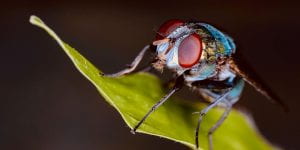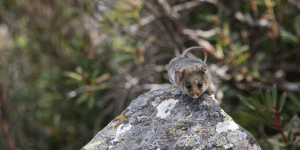Tag: conservation
-
Victoria’s new habitat law fails to protect a tiny endangered species
By Eddie Tsyrlin and Ary Hoffmann This article was first published on Pursuit. Read the original article. Australia’s unique and diverse wildlife is a source of national pride and global fascination. But this reputation is marred by our country’s alarming rate of species extinction. Australia has already earned the dubious title of the world leader […] -
The wingless grasshopper that could cross Bass Strait, but not the Yarra River
Hiromi Yagui, Michael Kearney & Ary Hoffmann Most grasshoppers can fly and some, notably locusts, can travel thousands of kilometres. However, there is a whole family of grasshoppers in Australia that can’t fly at all, and they are not very good at hopping either. These are the morabine (or ‘matchstick’) grasshoppers, comprising around 240 species […] -
A brief word from Ary Hoffmann on genetic rescue in Eastern Barred Bandicoots
Further details herehere -
Mini-beast renaturing: A time for local action
This article was first published on Pursuit. Read the original article. Dr Michael Magrath, Dr Steve Sinclair, Hiromi Yagui, Professor Ary Hoffmann and Professor Michael Kearney Insects in our environment are unsung heroes. These ‘mini-beasts’ are often inconspicuous, but they may have a huge impact on the health of ecosystems that sustain humanity. They pollinate […]blogs.unimelb.edu.au/pearg/2021/11/08/mini-beast-renaturing-a-time-for-local-action
-
Fly infertility shows we’re underestimating how badly climate change harms animals
Belinda van Heerwaarden, The University of Melbourne and Ary Hoffmann, The University of Melbourne Evidence of declining fertility in humans and wildlife is growing. While chemicals in our environment have been identified as a major cause, our new research shows there’s another looming threat to animal fertility: climate change. We know animals can die when […] -
Variety is the spice of life… and key to saving wildlife
“This article was first published on Pursuit. Read the original article.” Dr Andrew Weeks and Professor Ary Hoffmann In the critical battle against extinction, conservationists use a variety of tactics to try to save species. One of the most fundamental tools is maintaining the amount of variation of genetic material (DNA) in a group of […]blogs.unimelb.edu.au/pearg/2021/06/10/variety-is-the-spice-of-life-and-key-to-saving-wildlife
-
Male fertility ‘precariously close’ to climate change extinction limits
The loss of fertility in males as a result of climate change, particularly in the tropics, may be a better predictor of vulnerability to extinction by Dr Belinda van Heerwaarden This article was first published on Pursuit. Read the original article As temperatures rise across the globe, species will increasingly face environmental conditions beyond their […] -
The complexities of predicting climate change effects
This article was first published on Pursuit. Read the original article. Words: Dr James Camac, Nicholas Bell and Professor Ary Hoffmann We currently face significant challenges to accurately predict the impacts of our changing climate on individual species, as well as their ecosystems. A recent report on the demise of an area of snow gums […]blogs.unimelb.edu.au/pearg/2021/03/31/the-complexities-of-predicting-climate-change-effects
-
The grasshopper that was lost, then found, is now endangered
This article was first published on Pursuit. Read the original article. By Professor Ary Hoffmann, Vanessa White and Professor Michael Kearney The Key’s Matchstick Grasshopper, or the Keyacris scurra, was once widespread and abundant in New South Wales, the Australian Capital Territory and north-central Victoria, but over the past century its numbers have seriously declined. […]blogs.unimelb.edu.au/pearg/2020/08/21/the-grasshopper-that-was-lost-then-found-is-now-endangered
-
Moshe Jasper: Humans of BioSciences
Meet Moshe Jasper, Research Assistant in PEARG. Moshe shares what inspired him to become a scientist and what he wishes he had known when he was an undergraduate student. What is it like to work in PEARG ? The Pest & Environmental Adaptation Research Group undertakes research on adaptation of organisms (particularly invertebrates) to environmental […]blogs.unimelb.edu.au/pearg/2020/04/24/moshe-jasper-humans-of-biosciences
Number of posts found: 20









